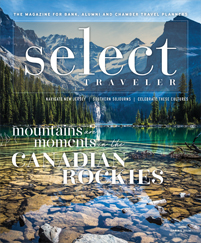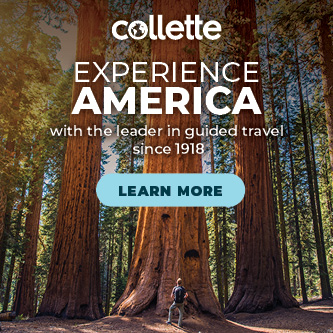Stories of Survival
Phnom Penh was sobering. We visited S-21, the Khmer Rouge’s prison for the genocide that took place in Cambodia following the Vietnam War.
“They began by killing educated people like professors and teachers, including my father, who taught French,” said Chantha. “This prison was a former high school. They told people they were going away for two weeks of training at the re-education center, but they were killed instead.
“I was separated from my mother. I learned to cook. I stayed in the rain, under the sky. I was 7 years old. After years of separation, I met my mom in shorts and that’s all. I told her, ‘You should not cry — I am here.’ One day a year, we have Angry Day.”
“How remarkable is that?” Kim said. “They designate one day for anger so they can get on with their lives.”
The following day, we hiked up a steep embankment to Wat Hanchey, an eighth-century Buddhist temple high on a bluff, to receive a water blessing.
“Water blessings have several meanings,” said Chantha. “They are a gesture of respect for the Buddha who blesses you, respect for your fellow man and respect for life. The Buddha attaches a ribbon to your wrist, which means you are under his care.”
We sat with our legs crossed in front of us and faced the monk. The blessing was a beautiful chant that lasted maybe three to four minutes. Sunlight fell across faces, and it seemed the most sacred moment of the trip.
“Of all we do in Cambodia, I most enjoy sharing the water blessing,” said Ha. “The monk’s chant is as beautiful as a song.”
That afternoon, we disembarked for Angkor Ban, a rural village. We visited an open-air classroom where several dozen children studied English. We sat with them and had animated conversations about their studies and their homes.
“I’m a student of ‘happy,’” Bob Coopman of San Antonio, Texas, told me back onboard. “I like to compare cultures, and these people are all smiling. Many of them don’t know what’s going on outside their villages and don’t care. They are happy with what is — and are unconcerned with what isn’t.”
A Final Adventure
On our last full day on the Avalon Siem Reap, we left the Mekong for the Tonle Sap River and walked into the village of Konpong Louang to watch silversmiths at work. These were authentic artisans, and our group bought a lot of silver: bracelets, earrings and decorative elephants.
Our walk through the village was invigorating. We were swarmed by kids anxious to sell us silver; but we had fun with it, and so did they.
Afterward, we drove several miles through the countryside to Kampong Tralach for our last adventure of the week. We boarded carts pulled by water buffaloes for a bumpy ride down to the river. Teams of two buffaloes pulled these lumbering wooden carts as drivers grunted out commands. With each grunt, the buffaloes picked up speed until they delivered us to the waiting ship.
That evening, during our final gathering as a group, Ha referenced a question that many of us had wondered about during this epic journey.
“Some Americans ask me, ‘How do the Vietnamese feel about us?’” he said. “There is no hostility or resentment here of Americans. That’s the influence of Buddhism, I think. Buddhism teaches us to look forward, not back.”
Gracious Elegance
Unlike ocean cruising, river cruising is designed to be intimate. The Avalon Siem Reap has the smallest passenger count on the Mekong. There are 18 elegant suites on the ship that spare no detail, from dark wood floors and cabinetry to recessed ceilings and an entire wall of sliding windows that open to the river outside.
People cruise on this ship to be enlightened, not entertained. The lounge reflects that in the evenings.
Jack Farris of San Antonio, Texas, said it best: “I like the lounge just like it is,” he told me. “I don’t need a guy sitting in the corner playing a piano.”
There is no sundeck, no shuffleboard. The deck on the bow is spacious and covered. Many passengers shared books on topics related to our itinerary that Avalon provides in the lounge.
The small bar was busy. Our group enjoyed Angkor beer on tap, wines and a cocktail of the day at no charge throughout the week. After seven days and nights of cruising, Kim and I had no bar tab.
The food onboard is outstanding. We had fresh salads like Vietnamese Banana Blossom, made with chicken, Thai basil, peanuts, shallots, peppers and lime dressing. Soups were plentiful, like the Burmese Crab Noodle or Cambodian Spiced Pork. One evening’s Chef’s Selection was traditional amok, a local fish marinated in chili and fresh herbs, baked in a banana leaf and served with steamed jasmine rice.
After each excursion, we were greeted by the ship’s staff. Our shoes were taken for cleaning, and we were offered hand sanitizer, followed by a cold washcloth. Near the lobby, we were given fresh fruits and chilled juice.
“Have you noticed that we always hear ‘Welcome back home’?” Kim asked me after one such outing.









